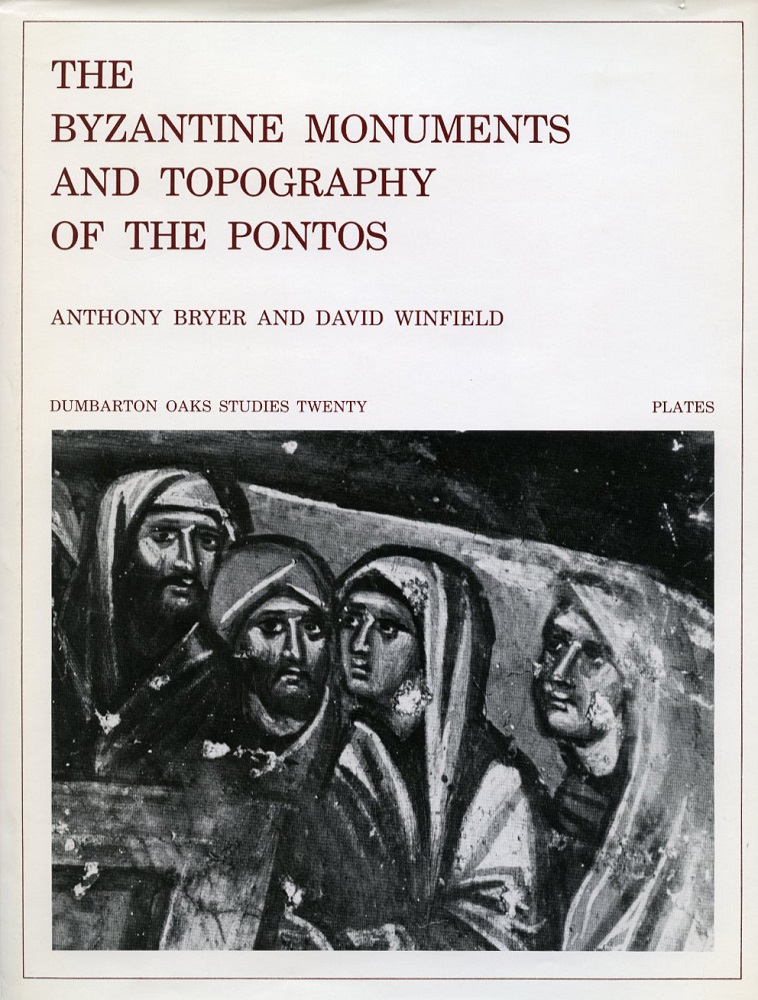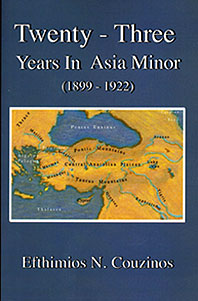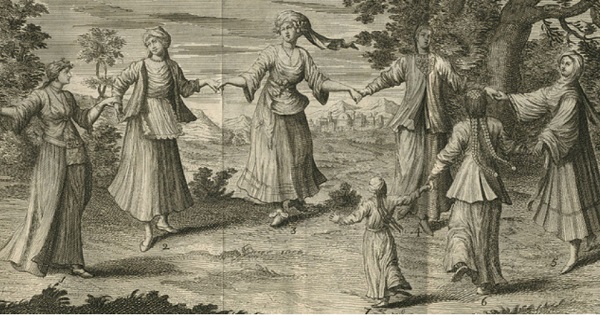
Sam Topalidis, June 2022
Canberra, Australia
This email address is being protected from spambots. You need JavaScript enabled to view it.
Canberra, Australia
Dance During the Roman and the Eastern Roman Empire
The Roman Empire
The Roman Republic conquered Greece by 146 BC (it had completed its conquest of Crete in 67 BC). With the split in the Roman empire between East and West (in late 4th century AD), Greece became part of the Eastern Roman empire, sometimes incorrectly called the Byzantine empire. After about 535 AD, the Eastern Roman empire used Greek as its official language. Sadly, there is little information on Greek dance during the Roman or the Eastern Roman empire.
The Romans adopted many of the achievements of Greek civilisation and made use of its artists and scholars. Greek dancers now addressed a wider audience, constituting various peoples, who mostly did not understand Greek. Not bound to the moral and aesthetic regulations of the small Greek city, Greek dances became burlesque, lascivious or comic. The unity that characterised the Greek notion of musike, comprising song, dance and instrumental music as a single unity, was fragmented into separate parts of a performance. Dance became pantomime. Although mimic dances abounded in the Greek antiquity, performers were able to relate entire stories with their gestures and postures. They wore masks, lavish clothes, jewellery and resorted to vulgar jokes and obscenities. Thus dancers became professionals of low status and dance lost its religious and educational character to become mere entertainment.[ Raftis (1985:2). ]
This public entertainment was not necessarily what was occurring in the villages and in private ceremonies like a wedding.
The Eastern Roman Empire
Most of the following information relates to Constantinople.
From the early days of the Eastern Roman empire, dancing was associated with triumphs. Following events in the hippodrome of Constantinople, winning charioteers danced in their chariots in their victory lap and then asked for permission to continue dancing in the streets. Dancers also entertained the crowd between races at the hippodrome. Sometimes, it appeared that dance was a spontaneous expression of joy. To churchmen, dancing could be either appropriate or inappropriate, depending on the context in which it was performed. Chrysostom, the archbishop of Constantinople (c. 400 AD) complained about women dancing at funerals. Nevertheless, men and women danced in churches and more often in the streets of Constantinople.[ Brubaker (2021:47). ]
From the 9th century until the fall of Constantinople to the Ottoman Turks in 1453, dancing was mentioned in texts and depicted in images but not in detail, which implies that it was so common that it did not need further explanation. Dancing could be a self-contained event or part of a procession or parade down streets. The dancing women portrayed on the obelisk in the hippodrome (Plate 3.1) seem to be providing localised entertainment rather than forming part of a parade while the dancing women holding headscarves above their heads (Plate 3.2) on two of the c. 1042 enamels that form part of the so-called crown of Constantine IX Monomachos also display dance as entertainment. Thus, there was accepted public participation of ‘respectable’ women in processional dancing. In the middle and late period of the Eastern Roman empire, images of dancing almost invariably show women, not men.[ Brubaker (2021:48). The Eastern Roman empire can be divided into the early period (4th–7th century), the middle period (8th–10th century) and the late period (11th century–1453) (Dimopoulos 2021). ]
Through the depictions and the murals, most of which are inside churches and monasteries, four categories of Greek dance can be identified based on the dancers’ hand-hold. Women are present in all categories. The categories are divided as:
1. Dancers held by the wrists. This is evident in depictions with women or men performing a chain dance, e.g. in the Great Lavra monastery at Mount Athos, Greece and St Nikolaos in Kozani, Greece.
2. Dancers held by the hands, arm in arm. Circle dances of women are included in this category as in the monasteries of Vathia on the Greek island of Euboea.
3. Dancers held crosswise by the wrists, e.g. from churches of Hagia Sofia in Gournitsa near Kalamata in southern Greece.
4. Dancers holding the belt of their adjacent dancers.[ Parcharidou-Anagnostou (2004) in Dimopoulos and Koutsouba (2021:258–259). ]
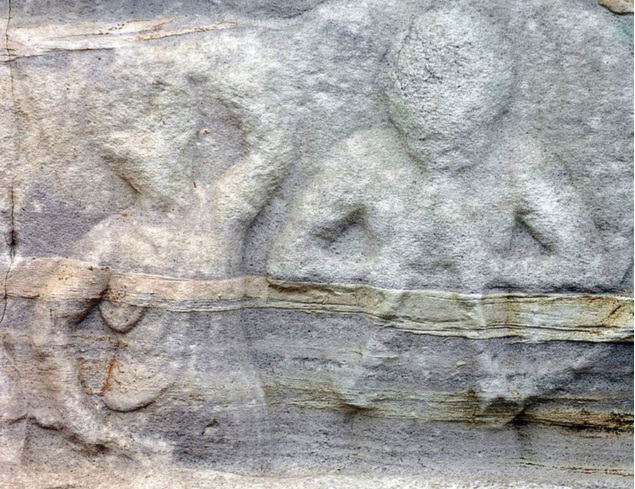
Plate 3.1: Dancing woman on the base of the obelisk in the hippodrome of Constantinople (Brubaker 2021:46).
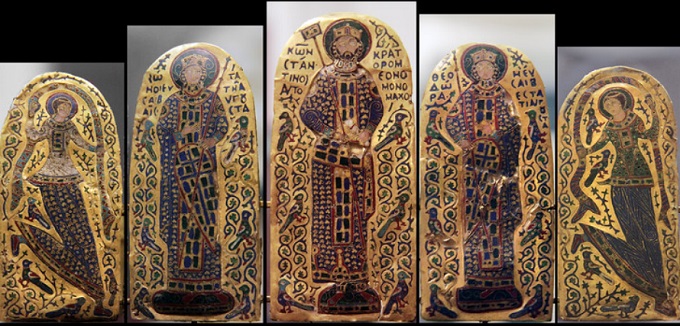
Plate 3.2: Five of the seven plaques of the crown of Constantine IX Monomachos, c.1042 (https://c2.staticflickr.com/6/5148/5688171342_c30500e07b_b.jpg).
In large cities, dance was more an entertainment and less a ceremony, as it was in the villages. Professional dancers, mimes and actors had been a part of urban life since Roman times. Dance was only condemned when associated with drunkenness and unseemly behaviour. Gyrations of the body and immodest leaps were censured, as were those women who lifted up their tunics, kicked their legs into the air and bared their bosom. Dance was an integral part of private and public ceremonies and feasts. Indeed, people danced inside, at Easter and Christmas. There were certainly dances at weddings, in taverns and at banquets. Dance spectacles were also staged in the theatre with musical accompaniment.[ www.dance-pandect.gr/en/history/roman-and-byzantine-period/]
Common people and farmers did not often travel and there were probably various ethnic groups in distant places whose members danced without paying attention to any prohibitions from Constantinople. Together with professional actors and musicians, professional dancers were on the lowest scale of the society. Mime, as a theatrical medium, was very popular. The mimic dancer presented all characters and events without words accompanied by music. The pantomimist was a popular kind of secular amusement.[ Blagojević (2012:89). ]
The most common dances were circle dances. There were dances danced only by men or only by women and also those danced by men and women together. St Basil the Great [329–379 AD] wrote about lively dances in which the dancers stamped their feet. A dance named Kordax was a Dionysian dance with shameless body movements. It derived from ancient comedy and was persecuted by the church. A dance named Pyrrhicos was a sort of a military training performed by armed soldiers. Ormos and Geranos were also circle dances. Mandilatos was performed with participants wearing kerchiefs.[ Blagojević (2012:89). ]
Saksimo was danced in the palace in front of the Emperor of the Eastern Roman empire on his birthday, on the occasion of a royal crowning or during the Brumalia holiday[ Celebrations for the Brumalia holiday commenced in late November and lasted for a month. The holiday was celebrated till the 11th century. ]. During the Eastern Roman empire, the function and significance of dance in society gradually changed. Dance was present on many different levels: in private and public life, during the annual festivities. Privately, aristocrats used to invite dancers to their feasts to entertain their guests. There were women’s dances at Easter and nocturnal satirical dances in disguise on the Kalends [first day of every month in the Roman calendar]. On state holidays, theatre shows and competitions of athletic groups were organised instead of Hippodrome races.[ Blagojević (2012:90). ]
Our focus now moves to Greek dance during the occupation of Greece by the Venetians and the Ottoman Turks.
Dance During the Venetian and Ottoman Turk Occupation of Greece
Most of the information in this chapter came from: www.dance-pandect.gr/en/history/ottoman-period/ Depictions of Greek dance from additional historical sources are included.
There is limited information on Greek dance during the occupation of Greece by the Venetians and the Ottoman Turks. It is assumed that during these periods dance continued to evolve in Greek villages. In Greece, during the Ottoman Turk occupation,[ In 395 AD, Crete passed to the Eastern Roman empire. In 1204, in the aftermath of the Fourth Crusade’s sack of Constantinople, the Crusaders sold Crete to Venice. The Ottoman Turks, who were in control of parts of Crete, wrested the capital city of Crete from the Venetians in 1669. The Turks were expelled from Crete by the Greeks in 1898 (www.britannica.com/place/Crete/Government-and-society). By 1500, most of the plains and islands of Greece were in Ottoman hands. Greece gained its independence in 1821 [only part of modern Greece was liberated] (www.newworldencyclopedia.org/entry/Ottoman_Greece). ] dance does not seem to have been suppressed, since neither the Orthodox Church nor the Ottoman authorities were inclined to be involved in such matters.
Some of the dances in Greece were described in the accounts of some contemporary foreign travellers. Their observations should be treated with care, since some travellers relied on their imagination.
In 1547, the French traveller, Pierre Belon, wrote that near Sfakia Crete, which was under Venetian rule, he saw peasants at a festival who danced in the heat of midday in summer until nightfall. Each participant strived to leap higher than the other and they sang as they danced.
In 1599, the Englishman Anthony Sherley, visited Heraklion, Crete (still under Venetian control). He wrote of the women who, every evening when their work was done, danced with their men out in the streets.
In 1605, the French Ambassador in Istanbul, Jean de Gontaut Biron (1605–1610) called at the Greek island of Chios where he noted the freedom of the women. Biron mentioned the islanders’ love of music, dancing and merry-making. The vice-consul opened the dance. Each man led a woman in a close, swirling, circular dance. The musicians kept up the same tune until the last member of the company stopped dancing, usually some two hours later.
According to the Frenchman Jean Du Mont, who reported in an account of his travels which was published in 1696, ‘Greek dances are extremely pleasant and full of mirth. The music contributes very much to the pleasantness of their dances, for their tunes are extremely brisk and airy.’[ Du Mont (1696:284). ] Plate 4.1 portrays an intriguing Greek dance from his book, sadly the name of the dance and the exact location is unknown.
Plate 4.2 displays well-dressed Greek women holding hands dated to 1698, dancing at Smyrna on the west coast of Anatolia.
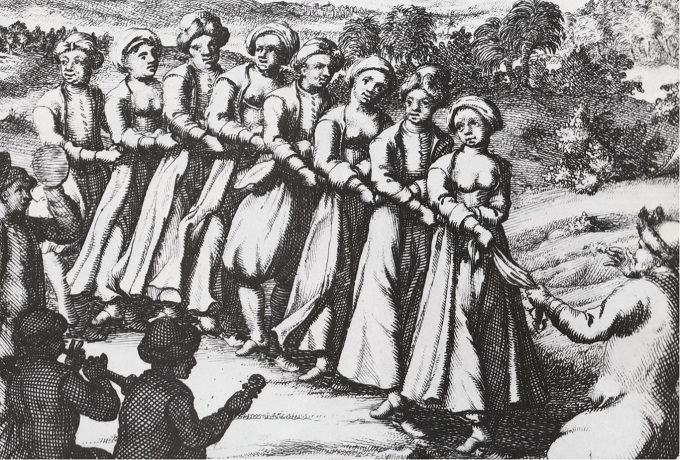
Plate 4.1: Greeks dancing. (Exact location unknown Du Mont (1696:284).)
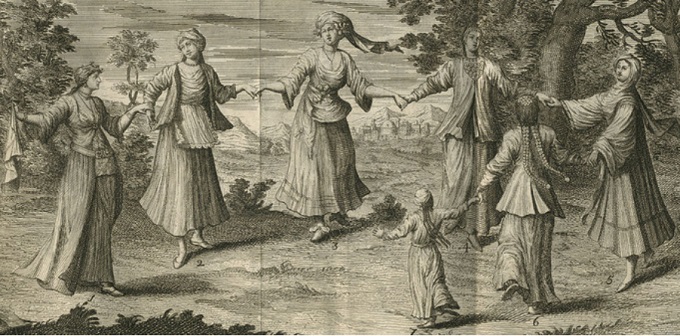
Plate 4.2: Greek women and a girl dancing at Smyrna, west coast of Anatolia, 1698 (De La Motraye 1727:176–177).
Plate 4.3 is another intriguing dance portrayed in a painting dated to 1715 in northern Greece which displays women dancing energetically. Plate 4.4 is a wall painting [believed to be from] a Greek monastery, dated to 1752 which depicts women dancing holding their wrists arm in arm. Such dances were mentioned in Greece during the Eastern Roman empire.
In his account of his travels in the mid-18th century, the Frenchman, Guys, described Greek dances, with comments by Madame Elisabeth Chenier, a Greek from Istanbul. This book became popular reading for travellers to Greece who referred to it without checking its accuracy. Guys' description of the Kritikos dance was that it was slow at first, gathering momentum as it proceeded. It was always led by a young girl holding a handkerchief or silk ribbon and dancing intricate and varied moves. The Hellenikos was danced on the islands by boys and girls separately, who initially danced the same steps and then join hands to pass under an arch formed by the arms of the first couple. The first girl then led the dance around her and emerged from the couples, waving her handkerchief. In another version of this dance, the dancers formed two circles, the inner of boys and the outer of girls. When the boys raised their arms the girls passed beneath and danced on the inside, then returned to the outside, without releasing their hand-hold. Of the Avanitikos dance, Guys mentions that it was led by a dancer who held a lash in his hand and a stick. He ran up and down the lines inspiring them. The others danced, hand in hand, following him with uniform, controlled steps. Madame Chenier added that similar dances were danced by Greek butchers in Constantinople.
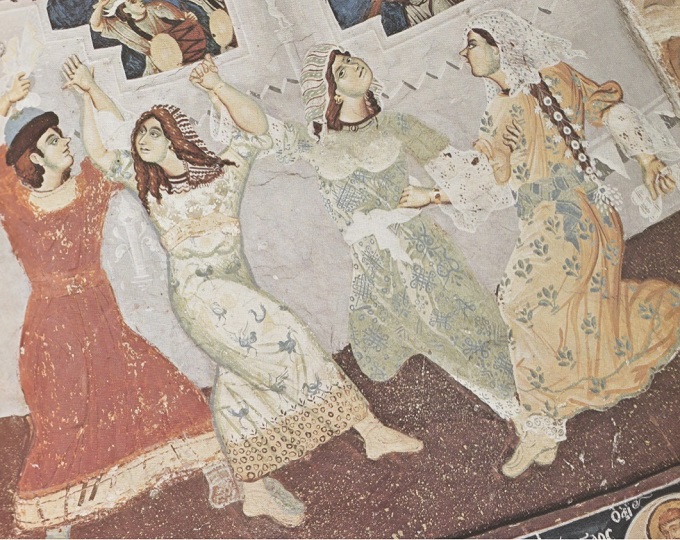
Plate 4.3: Energetic dancing on wall painting 1715, Chapel of Koukouzelissa, Great Lavra Monastery, Mt Athos, Greece (Anoyanakis 1991:125).
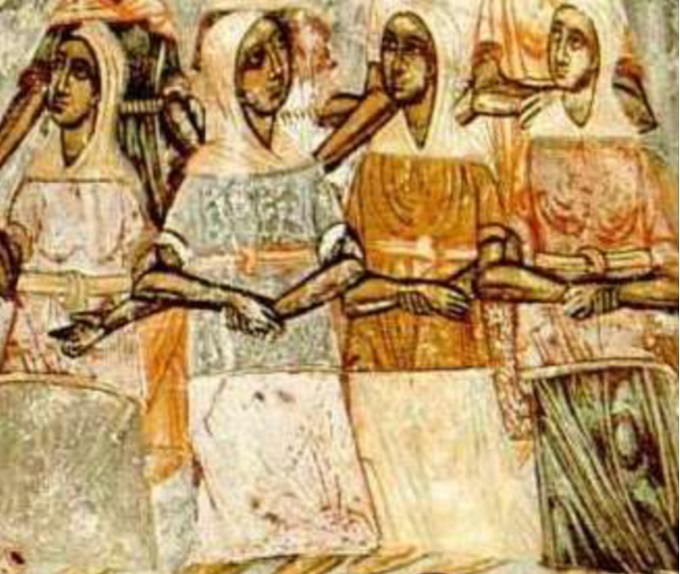
Plate 4.4: Women dancing holding their wrists arm in arm, 1752, Monastery of St Nicetas (Parcharidou-Agnoustou 2004:56).
Plate 4.5 taken from Guys (1783) book, portrays well-dressed Greek women dancing on their toes in Istanbul. Another dance mentioned by Guys was the Vlachikos which was performed slowly and required precision in executing the steps. The dancers held each other at arm's length, turned right stamping the left foot then turned left stamping the right foot and clapping hands.
Madame Chenier described the Lonikos, which was danced by couples with linked arms at weddings. Initially, the groom held a handkerchief and proffered his right arm to his bride. She rested her left hand on her belt while the bridesmaid supported her forearm; they were followed by other couples. They danced a few steps and then stopped, though the groom, bride and bridesmaid continue their paces with great gusto. The bride danced her small, dainty steps, holding the groom's handkerchief. He was impatient to clasp her hand, danced in tempo but punctuated his steps by kneeling expressively before his bride. The bridesmaid retires and there ensued a vivacious dance between the newly-wedded couple.

Plate 4.5: Greek women dancing in Istanbul (Guys (1783) in Anoyanakis (1991:340)).
To foreign visitors to Greece in the past, Greek dances seemed very similar and some found them boring. Another misunderstanding in the travellers' narratives concerned dance as a spectacle or performance to be seen by others.
Finally, it appears that the well-known Pentozali dance may have been created in the second half of the 18th century in Crete (more information follows in the next chapter on ‘Traditional Greek dance in modern Greek culture’).[ Pavlopoulou (2011:54). ]
Read Part 1 click here
